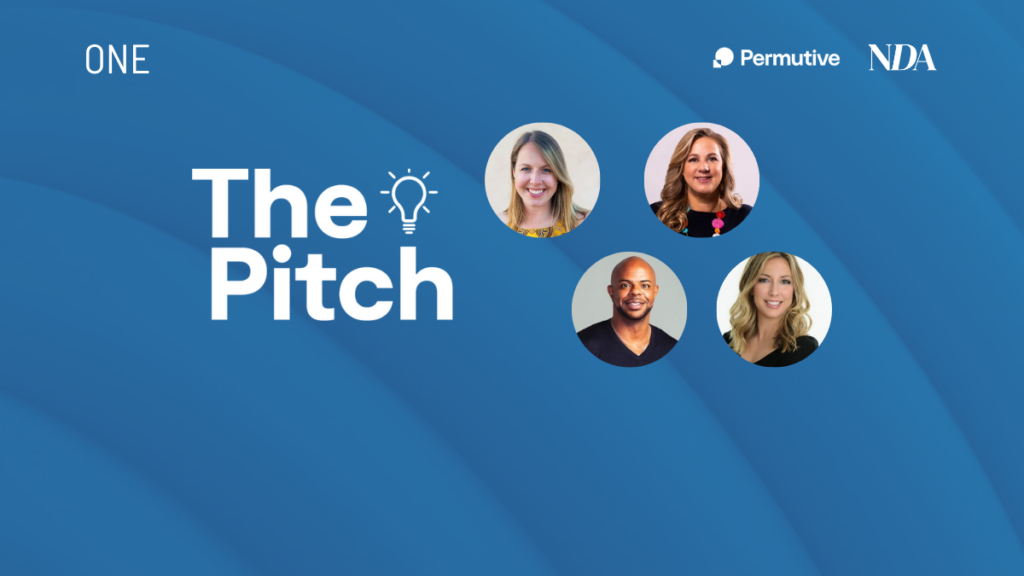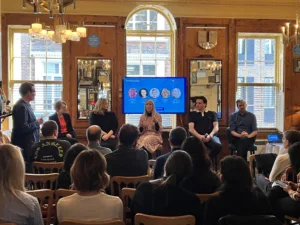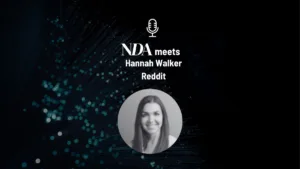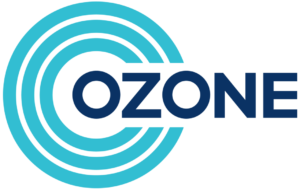As we move towards a world without third-party cookies, publishers are in a prime position to prove to advertisers why their first-party data is the future of digital advertising. With that in mind, we launched a contest for them to prove just that.
New Digital Age recently partnered with audience platform Permutive to host ‘The Pitch US’, a Shark Tank-style event that allows publishers to pitch their first-party data solution to a panel of agencies. The event saw representatives from Fandom, U.S. News & World Report, Group Nine Media, and SHE Media present to “Sharks” from Spark Foundry, Havas Media, Goodway Group, and Mindshare.
I’m a fan
The first pitch was delivered by fan platform Fandom, which reaches 315 million people around the world each month – often placing it as a top 25 ComScore property in terms of reach. The vast majority of Fandom’s traffic comes through its more than 250,000 fan-created wikis, made up of over 30 million individual wiki pages, documenting virtually every entertainment and gaming franchise in existence.
Beyond Fandom’s reach through its wiki pages, it also produces fan-centric video content, has built an official digital tool for D&D players, owns the Fanatical game key service, runs eSports leagues, and creates live experiences for fans.
To enable advertisers to reach its user base, Fandom offers a suite of integrated solutions including sponsorship opportunities, a custom content studio, providing clients with the ability to produce live or virtual experiences and, perhaps most relevant to a panel of agency representatives, high-impact ad formats.
Fandom solely relies on its first-party data, after it decided to stop utilising third-party data entirely 18 months ago. It launched a first-party data product called ‘Smart Targets’ earlier this year, which enables the platforms to identify and activate based on the behaviours of its audience. The product is made up of over 650 million targetable device IDs globally and more than 30,000 unique cohorts, with millions of custom combinations around those cohorts.
“Smart Targets is allowing agencies and advertisers to come to us and not just focus on the context of our content, but also align that with the behaviours of the audience,” said a Fandom spokesperson. “We are focused on providing agencies and brands the ability to have an understanding of how and where to engage with a specific audience to maximize the impact on their goals.”
Reporting for duty
The second to step up to face the Sharks was U.S. News & World Report, which is most famous for its rankings around education, health, cars, money, travel, law, and news. 87% of U.S. News’ visitors arrive on the site via organic search, often looking to inform choices around colleges or graduate schools, healthcare, investments, travel plans, moving plans, or a new car.
To help advertisers reach this intent-driven audience, U.S. News created ‘Intent Intelligence’ – a data-first marketing platform that helps to identify and target consumers beyond demographic characteristics by leveraging intent-based behavioural signals.
U.S. News can identify audiences through contextual signals, lead generation, widget interactions, event attendance, referral source, internal site search, site registrations, survey responses and more.
“We ingest these signals, and apply specific recency and frequency to them,” explained one of the U.S. News team. “Then, based on how down funnel those signals are, and how tight that recency and frequency is, we bucket our audience segments into one of three main categories to align with the marketing funnel: awareness, consideration, and decision.”
U.S. News provided an example of one of its audience cohorts. In this instance, it was a ‘parents’ cohort that was bucketed into the awareness part of the funnel. This audience had 1.4 million unique users and was made up of people that visited content relevant to family finance or family vacations, those who registered for U.S. News’ College Compass product as a parent, people who searched for queries relevant to parenting, visitors who engaged with certain filters, and those who clicked on widgets, such as the appointment booker for paediatricians.
At the beginning of a campaign with U.S. News, the publisher will recommend either a pre-built segment or custom audience that will align with the advertiser’s KPIs. It will follow this up mid-campaign by looking at the users who viewed or clicked on ads and use that to help optimise the campaign. And, following a campaign, it will use post-campaign insights to inform future buys on U.S. News.
One of the case studies shared by U.S. News related to a campaign with a top five brokerage firm in the US. The firm’s objective was to drive efficient account opens from new customers that had a high level of net new assets. U.S. News created a custom audience based on users who either engage with the firm’s fund profiles or clicked on U.S. News’ ‘Invested’ newsletter. The campaign, which ran through a programmatic guaranteed buy, drove a 29% more effective cost-per-account complete versus the other partners the brokerage firm were running campaigns with.
G9 summit
Group Nine Media (G9), home to some of the world’s biggest millennial and gen Z focused digital media brands, was third in the firing line. G9’s brands include NowThis, PopSugar, The Dodo, Thrillist, and Seeker.
NowThis is the biggest social-first brand for young people, and the most-watched mobile news brand globally, amassing over 1.6 billion video views from a global audience of 250 million users every month. PopSugar is the most popular digital women’s lifestyle brand, achieving 54 million monthly content views from 25 million unique users. The Dodo is the most engaged with pet publisher, and the most engaged with publisher on social full stop, boasting six billion video views every month. Thrillist is the number one digital media brand across travel, with 80 million uniques and over 200 million views each month. Seeker is number one in the science and technology category, reaching more people in their 20s than any competitor.
Across these channels, G9 is able to reach 11 million people in the LGBTQIA+ community, almost 20 million in the African-American/Black community, over 20 million in the Latinx community, and over 11 million in the Asian-American community. Using this reach, the publisher is able to create different audience personas and cohorts.
“It’s truly a reflection of the wide scale of people that are interested in our content and find us a reliable source of news and journalism,” said a member of G9’s product marketing team. “In the LGBTQIA+ community, we have the most reach compared to every other publisher. We have a number of editorial focuses on all of our brands that hone in on the experiences and the stories that come out of these communities… We’re very proud to have content creators and editors from all across the world.”
G9 provided an example of the affiliate content data points it has at its disposal on its PopSugar brand, suggesting that – if someone is looking at a list of 12 sweater sets on the platform – G9 is able to segment based on the name of the product and how much it costs, as well as aggregating products across the same brand, products across a certain category type, and affiliate partner.
On social media, G9 has strong followings, particularly for brands like The Dodo and NowThis. Here, G9 can capture this audience and see what they’re interested in. For instance, it has used these insights to see the differences in content preferences between males and females in the gen Z category. And it has also been able to identify different characteristics between millennials and gen Z when it comes to context, behaviour, and consumption.
Going forward, G9 is looking to create several new avenues to gain more first-party data, including the introduction of a Thrillist app and web features that require registration, and conversion data through a partnership with Trackonomics, among other things.
It’s all about her
The final pitch of the event came from Penske Media Corporation (PMC) owned SHE Media – a female-focused publisher with properties such as BlogHer, SheKnows.com, Stylecaster, and HelloFlo. Parent company PMC is home to brands including Variety, Rolling Stone, and Deadline.
PMC and SHE Media have made significant investments in data and targeting over the past five years, having anticipated there would be a shift in the digital advertising landscape. These investments culminated in the creation of the PMC Atlas Data Studio, which the business describes as being “much more than a mechanism of just applying targeting for a campaign”.
Atlas is built on four pillars of data. The first of those pillars is contextual data, on which PMC partners with IBM Watson to collect information around keywords, page titles, verticals, categories etc. from all the pages across its properties. On the second pillar, behavioural data, PMC partners with Permutive to collect page view frequency, scroll depth, time spent on page, and ad engagement in real-time. Thirdly, there’s proprietary data collection via ecommerce data, polls and surveys, newsletters and subscriptions, and event registrations. Finally, Atlas has a focus on data enrichment and enhancing advertiser strategies.
When looking to apply the data within Atlas, PMC and SHE Media look beyond just finding optimal audiences. The business also looks at how the data plays a role in identifying its editorial strategies, the way it approaches users, and how it can connect brands to these users in more meaningful ways. It then dives deeper to identify what the optimal times are to engage with a specific user, and what are the best platforms to deliver brand messaging.
In order to help advertisers meet and exceed their KPIs, the business adopts an always-on strategy for optimisations, and analyses campaigns through a combination of its own first-party data and brand-provided metrics and data. This enables it to identify which parts of the campaign are doing well, and which parts aren’t working quite as well.
“With the Atlas Data Studio, you have the full PMC portfolio at your disposal to help you really understand what drives your audiences,” said a PMC and SHE Media representative. “We understand that these are real people behind these impressions that have interests that range much farther than just the page they’re on at that moment. So, we use the power of the PMC portfolio and take the audiences that we have in fashion and beauty, lifestyle, parenting, technology, sports, and luxury, and put your target audience under a microscope, so that we can get a holistic view of the individuals within your target audience.”
The ‘Sharks’ felt there were some compelling solutions presented by the contestants, highlighting the ways that their first-party data could help advertisers reach consumers in the post-cookie world. The publishers were able to show how they use first-party data to understand their audiences and help brands achieve their KPIs.









